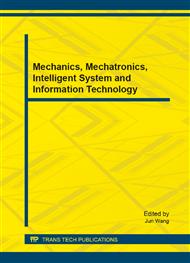[1]
Zhang, Hongling, Computer-mediated Intercultural Communication and its application in foreign language teaching, Shangdong Journal of Foreign Language Teaching. 2 (2009) 38-43.
Google Scholar
[2]
Belisle, R., Email Activities in the ESL Writing Class, the Internet TESL Journal. 5 (1996) 74-77.
Google Scholar
[3]
Kinginger, C., Gourves-Hayward, A., & Simpson, V., A Tele-collaborative Course on French-American Intercultural Communication, The French Review. 72(1999) 853-866.
Google Scholar
[4]
Furstenberg, G., Levet, S., English, K., & Maillet, K., Giving a Virtual Voice to the Silent Language of Culture, Language Learning & Technology. 1 (2001) 55-102.
Google Scholar
[5]
Zhang, Hongling, Cross-cultural Writing Exchange Program (CCWEP): Its Rational and Application, Computer-mediated Foreign Language Teaching. 6 (2005) 9-28.
Google Scholar
[6]
Wang, Xiaofeng & Xiao, Xuhua, the Cultivation of Intercultural Communication Competence in Modern Multimedia Teaching Environment, Journal of Sichuan International Studies University. 6 (2006) 9-14.
Google Scholar
[7]
Liang, Lijuan, The Application of Internet-based Communication in Intercultural Communication Course, Journal of China Educational Technology. 12 (2010) 45-49.
Google Scholar
[8]
Meagher, M., & Castanos, F., Computer-mediated communication. Linguistic, social and cross-cultural perspectives, John Benjamins Publishing Company, Amsterdam, (1996).
Google Scholar
[9]
O'Dowd, R., Understanding the other side,: Intercultural Learning in a Spanish-English E-mail Exchange, Language Learning & Technology. 72(2003) 118-144.
Google Scholar
[10]
O'Dowd, R & Ritter, M., Understanding and working with Failed Communication, in telecollaborative exchanges, CALICO Journal. 23(2006) 623-642.
DOI: 10.1558/cj.v23i3.623-642
Google Scholar
[11]
Belz, J.A., Social dimensions of telecollaborative foreign language study. Language Learning & Technology, 6(2002) 60-81.
Google Scholar
[12]
Wen, Qiufang, Testing and Teaching of Spoken English, Shanghai Foreign Language Publishing House, Shanghai, (1999).
Google Scholar
[13]
Chen, G.M. & Starosta, W.J., the Development and Validation of the Intercultural Communication Sensitivity Scale, Human Communication, 3 (2000) 1-15.
Google Scholar
[14]
Zhao, Xuan, Intercultural Sensitivity: Rational, Measurements, and Application, Modern Education Science, 2(2011) 5-9.
Google Scholar


